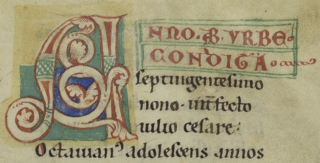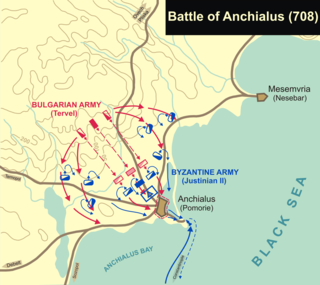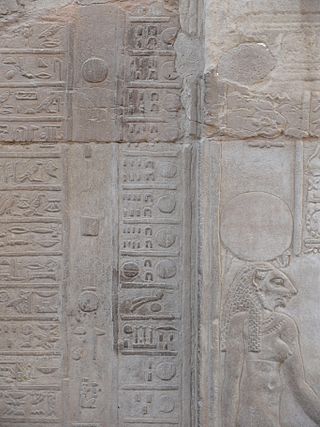Deaths
| | This section is empty. You can help by adding to it. (January 2014) |
| Millennium: | 1st millennium BC |
|---|---|
| Centuries: | |
| Decades: | |
| Years: |
| 708 BC by topic |
| Politics |
|---|
| Categories |
| Gregorian calendar | 708 BC DCCVIII BC |
| Ab urbe condita | 46 |
| Ancient Egypt era | XXV dynasty, 45 |
| - Pharaoh | Shabaka, 14 |
| Ancient Greek era | 18th Olympiad (victor )¹ |
| Assyrian calendar | 4043 |
| Balinese saka calendar | N/A |
| Bengali calendar | −1300 |
| Berber calendar | 243 |
| Buddhist calendar | −163 |
| Burmese calendar | −1345 |
| Byzantine calendar | 4801–4802 |
| Chinese calendar | 壬申年 (Water Monkey) 1990 or 1783 — to — 癸酉年 (Water Rooster) 1991 or 1784 |
| Coptic calendar | −991 – −990 |
| Discordian calendar | 459 |
| Ethiopian calendar | −715 – −714 |
| Hebrew calendar | 3053–3054 |
| Hindu calendars | |
| - Vikram Samvat | −651 – −650 |
| - Shaka Samvat | N/A |
| - Kali Yuga | 2393–2394 |
| Holocene calendar | 9293 |
| Iranian calendar | 1329 BP – 1328 BP |
| Islamic calendar | 1370 BH – 1369 BH |
| Javanese calendar | N/A |
| Julian calendar | N/A |
| Korean calendar | 1626 |
| Minguo calendar | 2619 before ROC 民前2619年 |
| Nanakshahi calendar | −2175 |
| Thai solar calendar | −165 – −164 |
| Tibetan calendar | 阳水猴年 (male Water-Monkey) −581 or −962 or −1734 — to — 阴水鸡年 (female Water-Rooster) −580 or −961 or −1733 |
The year 708 BC was a year of the pre-Julian Roman calendar. In the Roman Empire, it was known as year 46 Ab urbe condita . The denomination 708 BC for this year has been used since the early medieval period, when the Anno Domini calendar era became the prevalent method in Europe for naming years.
| | This section is empty. You can help by adding to it. (January 2014) |

Ab urbe condita, or anno urbis conditae, abbreviated as AUC or AVC, expresses a date in years since 753 BC, the traditional founding of Rome. It is an expression used in antiquity and by classical historians to refer to a given year in Ancient Rome. In reference to the traditional year of the foundation of Rome, the year 1 BC would be written AUC 753, whereas AD 1 would be AUC 754. The foundation of the Roman Empire in 27 BC would be AUC 727. The current year AD 2024 would be AUC 2777.
The Julian calendar is a solar calendar of 365 days in every year with an additional leap day every fourth year. The Julian calendar is still used as a religious calendar in parts of the Eastern Orthodox Church and in parts of Oriental Orthodoxy as well as by the Amazigh people.

The Roman calendar was the calendar used by the Roman Kingdom and Roman Republic. Although the term is primarily used for Rome's pre-Julian calendars, it is often used inclusively of the Julian calendar established by the reforms of the Dictator Julius Caesar and Emperor Augustus in the late 1st century BC.
Year 12 BC was either a common year starting on Saturday, Sunday or Monday or a leap year starting on Sunday of the Julian calendar and a common year starting on Friday of the Proleptic Julian calendar. At the time, it was known as the Year of the Consulship of Messalla and Quirinius. The denomination 12 BC for this year has been used since the early medieval period, when the Anno Domini calendar era became the prevalent method in Europe for naming years.
AD 1 (I) or 1 CE was a common year starting on Saturday or Sunday, a common year starting on Saturday by the proleptic Julian calendar, and a common year starting on Monday by the proleptic Gregorian calendar. It is the epoch year for the Anno Domini (AD) Christian calendar era, and the 1st year of the 1st century and 1st millennium of the Christian or Common Era (CE).

Year 708 (DCCVIII) was a leap year starting on Sunday of the Julian calendar, the 708th year of the Common Era (CE) and Anno Domini (AD) designations, the 708th year of the 1st millennium, the 8th year of the 8th century, and the 9th year of the 700s decade. The denomination 708 for this year has been used since the early medieval period, when the Anno Domini calendar era became the prevalent method in Europe for naming years.
The proleptic Julian calendar is produced by extending the Julian calendar backwards to dates preceding AD 8 when the quadrennial leap year stabilized. The leap years that were actually observed between the implementation of the Julian calendar in 45 BC and AD 8 were erratic.

The Ides of March is the day on the Roman calendar marked as the Idus, roughly the midpoint of a month, of Martius, corresponding to 15 March on the Gregorian calendar. It was marked by several major religious observances. In 44 BC, it became notorious as the date of the assassination of Julius Caesar, which made the Ides of March a turning point in Roman history.
In chronology and periodization, an epoch or reference epoch is an instant in time chosen as the origin of a particular calendar era. The "epoch" serves as a reference point from which time is measured.
Year 46 BC was the last year of the pre-Julian Roman calendar. At the time, it was known as the Year of the Consulship of Caesar and Lepidus. The denomination 46 BC for this year has been used since the early medieval period, when the Anno Domini calendar era became the prevalent method in Europe for naming years.
Year 45 BC was either a common year starting on Thursday, Friday or Saturday or a leap year starting on Friday or Saturday and the first year of the Julian calendar and a leap year starting on Friday of the Proleptic Julian calendar. At the time, it was known as the Year of the Consulship of Caesar without Colleague. The denomination 45 BC for this year has been used since the early medieval period, when the Anno Domini calendar era became the prevalent method in Europe for naming years.

The ancient Egyptian calendar – a civil calendar – was a solar calendar with a 365-day year. The year consisted of three seasons of 120 days each, plus an intercalary month of five epagomenal days treated as outside of the year proper. Each season was divided into four months of 30 days. These twelve months were initially numbered within each season but came to also be known by the names of their principal festivals. Each month was divided into three 10-day periods known as decans or decades. It has been suggested that during the Nineteenth Dynasty and the Twentieth Dynasty the last two days of each decan were usually treated as a kind of weekend for the royal craftsmen, with royal artisans free from work.
The history of calendars covers practices with ancient roots as people created and used various methods to keep track of days and larger divisions of time. Calendars commonly serve both cultural and practical purposes and are often connected to astronomy and agriculture.

An olympiad is a period of four years, particularly those associated with the ancient and modern Olympic Games.
A calendar era is the period of time elapsed since one epoch of a calendar and, if it exists, before the next one. For example, it is the year 2024 as per the Gregorian calendar, which numbers its years in the Western Christian era.
The Era of the Martyrs, also known as the Diocletian era, is a method of numbering years based on the reign of Roman Emperor Diocletian who instigated the last major persecution against Christians in the Empire. It was used by the Church of Alexandria beginning in the 4th century AD and it has been used by the Coptic Orthodox Church of Alexandria from the 5th century until the present. This era was used to number the year in Easter tables produced by the Church of Alexandria.
A year zero does not exist in the Anno Domini (AD) calendar year system commonly used to number years in the Gregorian calendar ; in this system, the year 1 BC is followed directly by year AD 1. However, there is a year zero in both the astronomical year numbering system, and the ISO 8601:2004 system, the interchange standard for all calendar numbering systems. There is also a year zero in most Buddhist and Hindu calendars.

The Byzantine calendar, also called the Roman calendar, the Creation Era of Constantinople or the Era of the World, was the calendar used by the Eastern Orthodox Church from c. 691 to 1728 in the Ecumenical Patriarchate. It was also the official calendar of the Byzantine Empire from 988 to 1453 and of Kievan Rus' and Russia from c. 988 to 1700. This calendar was used also in other areas of the Byzantine commonwealth such as in Serbia, where it is found in old Serbian legal documents such as Dušan's Code, thus being referred to as the Serbian Calendar as well.
Julian may refer to:
The Gregorian calendar is the calendar used in most parts of the world. It went into effect in October 1582 following the papal bull Inter gravissimas issued by Pope Gregory XIII, which introduced it as a modification of, and replacement for, the Julian calendar. The principal change was to space leap years differently so as to make the average calendar year 365.2425 days long, more closely approximating the 365.2422-day 'tropical' or 'solar' year that is determined by the Earth's revolution around the Sun.